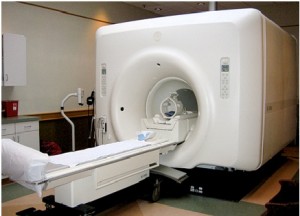Achilles tendon rupture test is an absolute must, once the symptoms for Achilles tendonitis or Achilles tendon rupture have been noted, in order to come up with a concrete diagnosis.
Achilles Tendon Rupture Test – The Different Tests
An Achilles tendon rupture test is normally performed in order to diagnose any damage done to the tendon. Once the damage is identified, the extent to which the tendon has been damaged can be verified.

By checking for damage and the extent of the damage, doctors can prescribe which method of Achilles tendonitis treatment to go forth with. Here are some of the tests that are used to indicate Achilles tendon rupture.
Achilles Tendon Rupture Test #1 – Simmond’s Test
This test is also called as the Thompson test or the Simmond’s-Thompson test. In the Simmond’s test, the patient is made to lie face down on a bed with his legs hanging from the bed surface from the knee downwards.
The doctor then squeezes the calf and massages it gently. If this is done to a healthy person, the foot pantraflexes (moves either upward or downward). The test is considered positive if this does not happen and it implies that the patient suffers from damage to the tendon. The Calf-Squeeze Test is similar to the Simmond’s test and employs the same technique.
Achilles Tendon Rupture Test #2 – Knee Flexion Test
In this case, the doctor asks the patient to lie flat on his stomach on a bed. The patient is then asked to bend his knees till his lower leg is straight. During the test, the injured foot points downwards, showing that there is a chance that the patient may have a ruptured tendon.
Achilles Tendon Rupture Test #3 – Heel Raise Test
This test is otherwise known as a tiptoe test. The object of this test is very simple. The patient has to stand on his toes, like a ballet dancer, and make sure that his heels are above the ground. If there is some pain while doing this or if the patient is unable to do it, then a rupture in the tendon is confirmed.
Achilles Tendon Rupture Test #4 – Needle Test
For this test the doctor inserts a thin and small needle just two or three inches above the heel into the calf. The doctor then moves the patient’s foot either upwards or downwards. Ideally, the needle should move in the same direction as the foot. If it doesn’t move, then Achilles tendon rupture can be suspected.
Achilles Tendon Rupture Test #5 – Sphygmomanometer Test
A sphygmomanometer is nothing but the cuff that is wrapped around the arm when taking someone’s blood pressure. This test also involves the patient lying flat on his stomach. The doctor then ties it around his calf and pumps it with air.
The doctor then moves the patient’s foot towards the body and ideally this should result in an increase in calf pressure. If the patient suffers from Achilles tendon rupture, this will not be the case.
Achilles Tendon Rupture Test #6 – MRI
MRI or Magnetic Resource Imaging helps in understanding the extent of the damage caused and in seeing complications like internal bleeding, if any. The patient should lie absolutely still inside an MRI machine.
Achilles Tendon Rupture Test #7 – Ultrasound
In this test, a gel is applied to the affected area and a probe is used to send sound waves through the body to the affected part. This is connected to a screen where images can be seen.
These are the different diagnostic tests for Achilles tendon rupture that you can take up. It’s always ideal to consult your physician in case you experience some of the symptoms of Achilles tendonitis so that you can take an informed decision regarding the diagnosis and treatment.